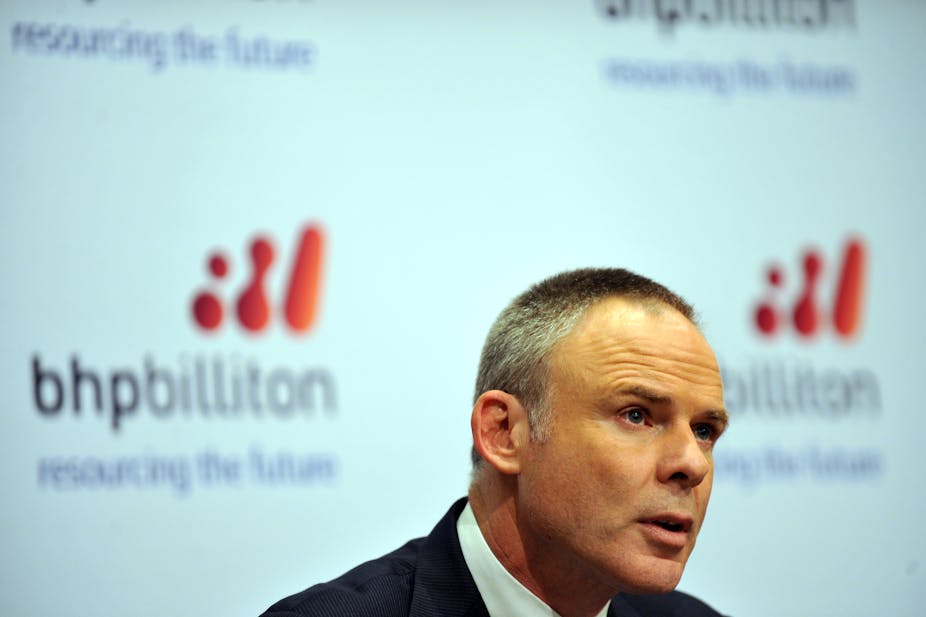Marius Kloppers, who today announced his intention to resign as CEO of mining firm BHP Billiton, leaves behind a formidable legacy in both mining and politics as head of a firm that campaigned for a scaled-down minerals resource rent tax.
Kloppers will retire as CEO in May this year and will be succeeded by BHP Billiton’s Chief Executive Non-Ferrous, Andrew Mackenzie.
BHP Billiton also today reported results for the half year ended December 31 2012 including Underlying EBIT (earnings before interest and taxes) of US$9.8 billion.
Kloppers said in a statement released by the firm that “deciding the right time to retire was never going to be easy.”
“However after almost 20 years with BHP Billiton, 12 as a senior executive and nearly six as CEO, I believe now is the right time to pass the leadership baton,” he said.
“I am very proud of the achievements of our Company and our people. One of the first decisions I made when I became CEO was to bring Andrew into BHP Billiton, and I look forward to working closely with him, the Board and the management team during the transition.”
Professor Roy Green, Dean of the Business School at the University of Technology Sydney, said the resignation was not completely unexpected.
“What BHP was looking for was a seamless transition which would reinforce its place as a leading global company in the resources space. It obviously has strong interests in Australia but is expanding into many other countries,” said Professor Green.
“Kloppers managed BHP in an important time of transition for the company and his legacy will be a formidable one in terms of market return and new ventures.”
Kloppers also led BHP at a time when mining was deeply political, and miners were seen as key players in negotiations that led to Prime Minister Julia Gillard and her deputy Wayne Swan watering down former Prime Minister Kevin Rudd’s envisioned mining tax.
“They were very clear about the interests of the company and managed to leverage a result for the resource rent tax that ensured that little tax would ever be paid. That’s a tribute to the negotiating skills of the company and their lawyers but doesn’t reflect too well on the leading politicians of the day,” said Professor Green.
“Ultimately, while good for BHP shareholders, it leaves a taint for the Australian population who would have hoped to benefit more clearly from the huge boom in both our commodity prices and future export income.”
Professor John Warhurst, Adjunct Professor of Australian Politics at the Australian National University said that big miners including BHP “have collaborated with the government and made sure the government has accommodated their interests.”
“That was reflected in the revision of the mining tax by Gillard and Swan, which was generally seen as being concluded to the big miners’ satisfaction,” he said.
Mixed legacy
Associate Professor Sam Wylie, Principal Fellow of the Melbourne Business School, said Kloppers’ decision to retire was not surprising and he would leave a mixed legacy.
“He has decentralised the business, which is good. And he has improved the project selection process, which BHP has had much trouble with in the past,” he said.
“[However], BHP had a disaster with their briquetted iron in the Pilbara where they lost about $4 billion. And then they had the disaster in Ravensthorpe with their nickel production facility.”
Dr Wylie said Kloppers “hasn’t really driven cost-cutting forward as rapidly as people would hoped as his record with acquisitions has been poor.”
“He wasn’t able to pull off the merger with Rio Tinto, which was ill-conceived right from the start. He wasn’t able to take over the Potash company. And BHP bought a lot of gas assets in the US and paid far too much for them,” said Dr Wylie.
“Although, he shouldn’t be blamed too much for that; no one knew what was going to happen to gas prices in the US.”

